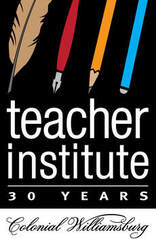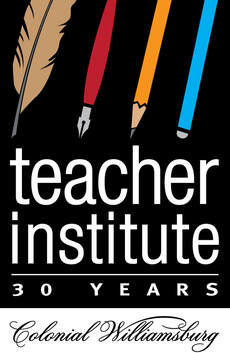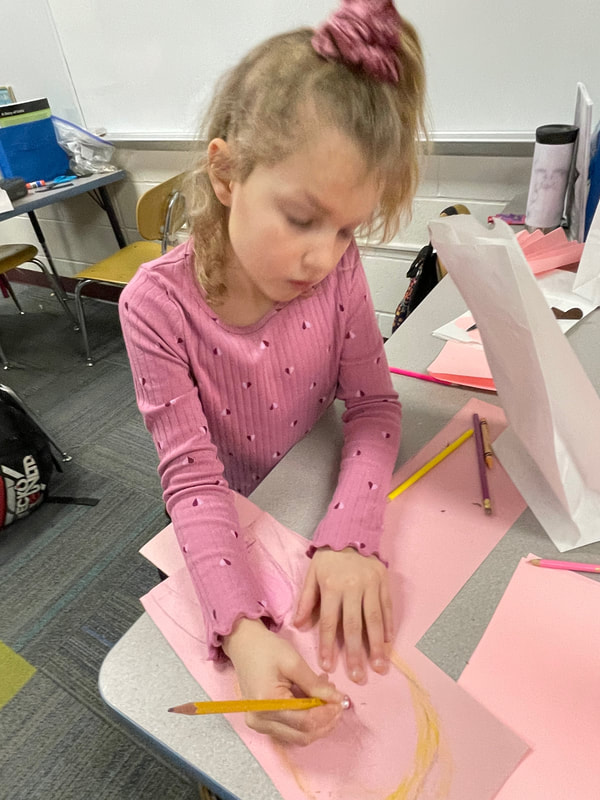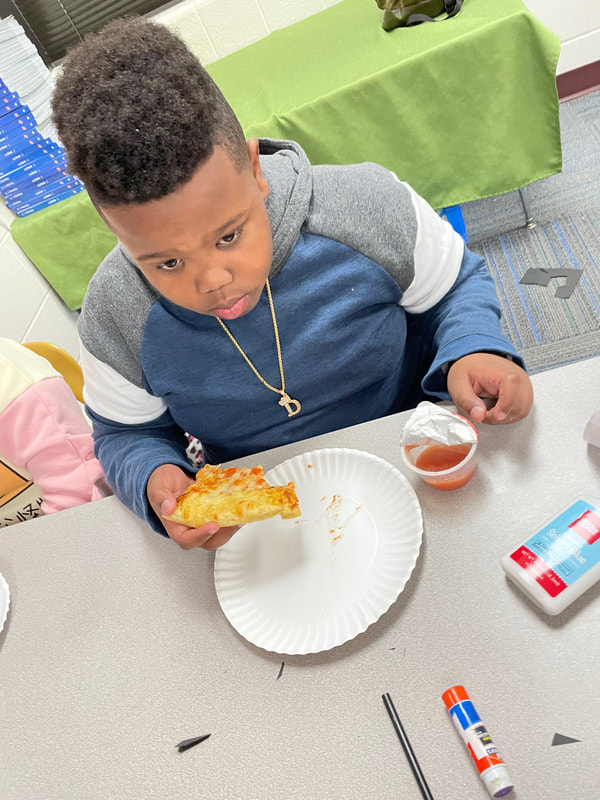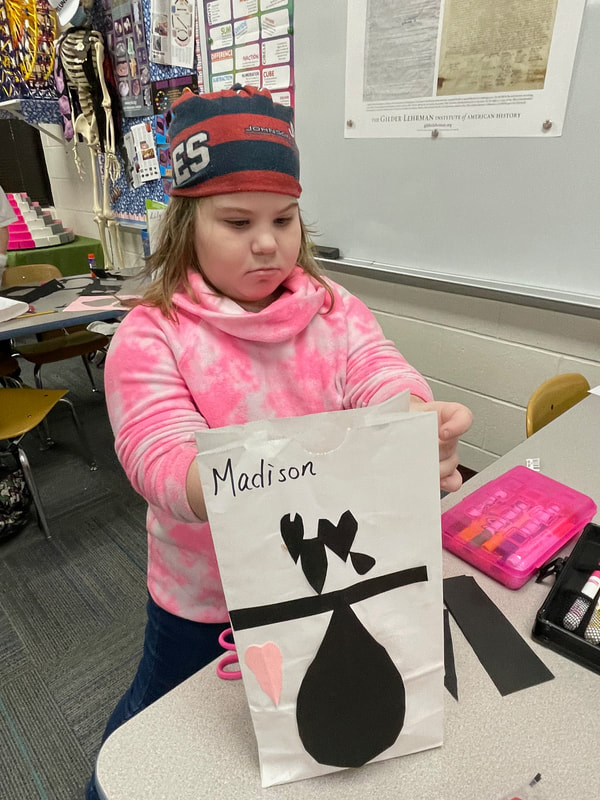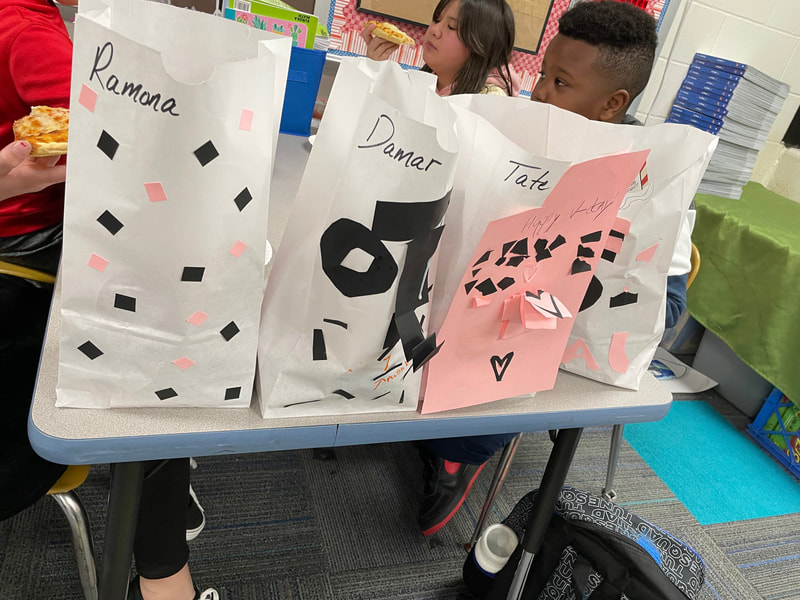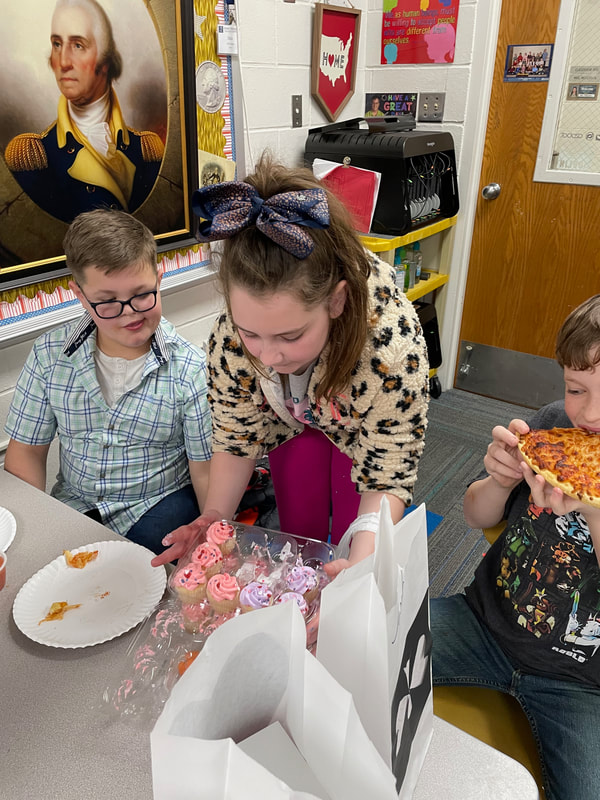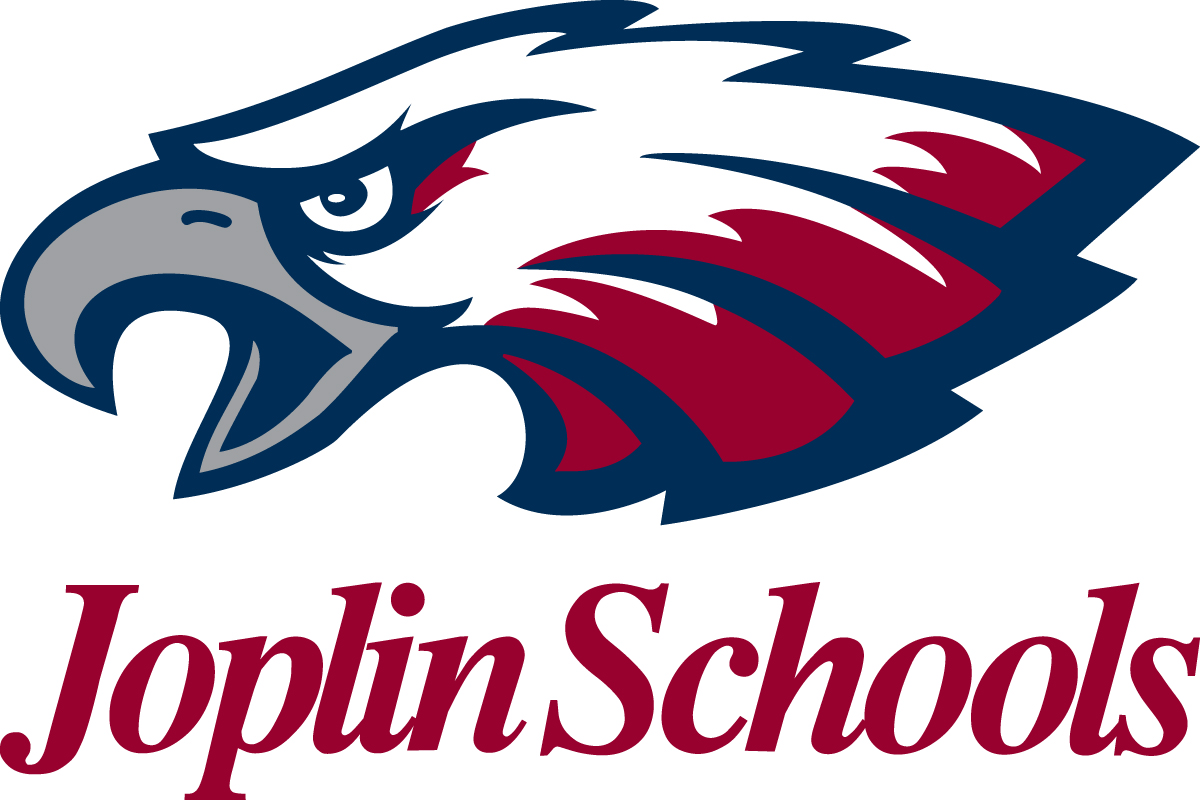We are only one small dot on the timeline of the world.
|
These are some great insights. I like the way he explains things in this short video.
0 Comments
Description: “Scratch the green rind of a sapling,
or wantonly twist it in the soil, and a scarred or crooked oak will tell of the act for centuries to come. So it is with the teachings of youth, which make impressions on the mind and heart that are to last forever.” (Henri Frederic Amiel) Originally Posted 11/24/19 I've been thinking about professional development lately. It's something that doesn't seem to have changed much for the better. These days professional development seems to have become collaboration and common planning time and less about training teachers to do their jobs better. Even then, all we do is sit around and talk to each other about things we're doing in our classes...or we talk about what assessments are working...or we discuss what problems we may be experiencing with the newest curricular tool. Sure, we can exchange ideas, but that's not really professional development; that's a meeting. Grade level meetings are much the same, but data analysis, again, is not professional development. There are rare times, usually during the summer or the week before school starts back up in August, when the school district brings in a textbook representative to guide teachers through the teacher edition, but rarely is there actual, substantive professional development. Something to help teachers learn content. Something to help teachers learn methodology. Something to inspire teachers to keep going. Something to help teachers improve their teaching. So what if I was in charge of professional development? How would I design a professional development regimen for a district of a school? Would I hire an out-of-town specialist to give a speech and then send him on his way? Should send teachers to training in another city and then ask them to present at a faculty meeting? Is it a better idea to do a book study with the staff? Would we prefer a webinar? I think, none of the above. Oh, sure, there could be a limited benefit to each of those options, but my inclination would be to do something different. I wrote a little about the #ObserveMe movement in my book, There's No Busyness Like School Busyness, and I think I could use some of that idea to develop a program for teachers in the district. I would make teachers feel comfortable with vulnerability. I would observe each teacher to help her find her strengths. When something about her teaching could be tweaked, I would connect her with a master teacher in the needed area. I'm confident that in my 30 years in the profession that I can help teachers develop their professional habits. I believe I could alleviate their anxieties and stresses. If the district's idea is to instill a collaborative aspect into our way of doing things, my vision for professional development could be a springboard to achieving that kind of a culture. This wouldn't be a "one-and-done" professional development plan, and people would not just attend a session and then forget what was presented. I picture professional development personalized for each teacher's classroom - in each teacher's classroom. For years, I thought it would be interesting to initiate a teaching theater where a real teacher would teach a real class of real students, while other teachers or potential teachers watched from a gallery above. The master teacher would conduct class below, while also pointing out certain aspects of the lesson to the teachers above, and asking questions along the way. While this may be a crazy idea, I believe teachers can learn by watching their peers. In my vision, I could help teachers find the right peers to observe. At least it would be an effort to take the training on location. I believe it would be effective and lasting. Click for the full list of my Professional Pet Peeves.
It has been a while since our field trip to the Crystal Bridges Museum of American Art in Bentonville, Arkansas, along with the artist-in-residence - Will Knaur - who later came to our fourth grade classes for lessons. As a part of the final project, Mr. Knaur recorded some of our students' interpretations of selected art pieces, and soon these will accompany the artwork in the form of QR codes so guests may listen to student voices. Below is the brochure to guide guests to the locations of the nine QR codes located throughout the museum. Even the photo on the brochure is from our visit last fall. I am anxious to experience this in person on my next visit.
Whoops! Just when you thought you had seen all of the pictures, I just found these additional shots of some students who got to dress up for the part of 18th century citizen or soldier. We're thankful to the American Revolution Institute of the Society of the Cincinnati in Washington, DC, for the loan of these costume pieces. The kids really enjoyed getting to try them on.
Originally posted 2/9/20  I've had this volume on my wish list for a couple of years. I ordered it with a gift card from last Christmas. The title at the top of the front cover is both descriptive and misleading, though. This book, constructed by President Thomas Jefferson - self-proclaimed author of America's religious freedom - is a painstaking endeavor to fulfill a promise to an old friend. It was one man's effort to understand the Bible more clearly. In doing so, Jefferson left a document that tells us more about his thoughts and opinions of the Christian religion. It is not a Bible and he he did not title it as such, but is does include the four Gospels, arranged chronologically. Dr. Benjamin Rush, signer of the Declaration of Independence, encouraged his friend Thomas Jefferson to formulate his beliefs in writing. Jefferson promised to do so. With knife in hand, Mr. Jefferson set out to construct a document that he respected and understood to be true. He put together a book of interlinear columns representing four of the seven languages Jefferson could read, those languages becoming a part of the real title as he assigned it: The Life and Morals of Jesus of Nazareth Extracted Textually from the Gospels in Greek, Latin, French, and English. Mr. Lincoln constructed a chronological account of the four accounts of the Gospel from the New Testament of the Bible - but he purposefully omitted sections he did not believe were true. That is to say, President Jefferson cut out any reference to miracles. He cut out most references to angels. You won't find water turning to wine, blind and lame people being healed, or any reference to a resurrection as reality. In the light of this, (or at least the one column that I can read), I am somewhat amazed that he left references to a God who resides in a Heaven  There are several versions of this book with a variety of covers and bindings. I chose this one because it contains a photographic copy or the original text, complete with Jefferson's handwritten labels. I can turn to any page and find his knife cuts. I became interested in this volume when I discovered the National Museum of American History link to the story of the "Jefferson Bible". The site contains information about the meticulous restoration of the book, complete with ink-study, binding, and more. As a part-time preacher, history buff, and teacher of American history, the book interests me in all three. It is a beautiful and compelling peek into the mind of a national genius. I may not share Jefferson's opinion of miracles, angels, and resurrection, but I must appreciate the lengths to which this man went to study the words. Few people I know have spent the hours Jefferson did in discerning the Life and Morals of Jesus of Nazareth... Now, I am left to wonder at his opinions of the rest of the New Testament (and the Old Testament for that matter). The premiere episode of Washington's Armor will be broadcast on Presidents Day, at 7pm, Monday, February 21. I have been following the making of this movie series for some time now, excited to see a movie finally depicting the French and Indian War era with a young George Washington as the central character. It is such a terrific story, with the main character undergoing a fantastic transformation as a human being. This is where George becomes Washington! I have a quick disclaimer though: I have not seen this production and cannot yet endorse it. The focus may be different than expected. I am reasonably hopeful that the story will be told with historical accuracy and in a tasteful manner. From the interviews and behind-the-scenes videos I've seen, I am confident that the language will be appropriate, and there shouldn't be any sexual content to worry about.
I've had to download the app on my digital television service, but the NTD network may also be available on our local digital channels. What better way to spend the day before Washington's Birthday!
The Colonial Williamsburg asks for any other information that I think would pertain to my consideration for a scholarship to the teacher institute this summer. I didn't have to revise very much from the last time I was accepted to the institute, but I did need to include some additional information at the end.
In 2011, our school was significantly damaged in the infamous EF5 tornado that destroyed a third of our city. That summer, I assisted in coordinating relief teams who reported to the church for direction. I passed out supplies and food to survivors almost every day from dawn to dusk. The following school year became my most rewarding in education, teaching and counseling students and parents who lost their houses and loved ones or had been personally injured or emotionally afflicted by the storm. Originally posted December 2012  One of the most famous (and most popular) of Missourians is Walt Disney. Marceline, Missouri is considered to be Disney's hometown, and his iconic Mickey Mouse was created in Kansas City. While Walt Disney was born in Chicago, we Missourians don't hold that against him. I have been to a couple of Disney movies in my lifetime, and I have visited five of the theme parks that bear his name. Undoubtedly, most of us have heard that Disney parks are "the happiest place on earth", but I suppose that's subjective phrase. Clearly, Disney and his "imagineers" had a magical vision. He found ways to make his vision real - even developing "unusable" swamp land in Florida into an unequaled economic empire based on fictional characters, places, and experiences. In a recent blog post, Hillsboro, Missouri, teacher Krissy Venosdale wrote, "It is clear that when Walt Disney said 'Our greatest natural resource is the minds of our children,' he meant it. He understood kids. He ‘got’ what engages people. He created an experience that develops wonder, inspires imagination, and instills dreams." The focus in education has moved dramatically in the last 15 years. While being a teacher has required a Bachelor of Science degree for several decades now, it has always been recognized that teaching is a balance of Science and Art. Put in a different way, no one would patronize Disney movies if they were all about cause and effect, character descriptions, set dimensions, or cost analyses and financial projections. No, we patronize those movies because of the magic - the storylines, the deep character development, and the emotion. In short, what makes a good Disney movie is the wonder, exploration, and discovery! In her blog, Mrs. Venosdale, who also created the images that accompany this writing, wrote: We’ve spent so much time focusing on tests and collecting worksheets in our schools. I get that. Those are the things we’ve come to associate with learning along the way. Misguided traditions. But, it’s time we associate what learning is really about. More time focusing curiosity, imagination, and dreams. Teaching kids that ‘impossible’ is fun. Pouring wonder into our schools like it’s oxygen. Because inside every kid is a vision, just like the one Walt Disney had. A vision that we’ll never see if we don’t take the time to develop it, listen to it, and embrace it. A vision bigger than scores, worksheets, and points. A vision that will add something special to the world. We’ve just gotta remember where to focus, or we’ll miss it.  I couldn't agree more. I understand there is a place for ongoing assessment and research-based teaching strategies, but when schools and teachers get bogged down in the mire of data collection and reactionary differentiation among the student body, they sacrifice the personal touch, the close teacher/student relationships, and the "magic" that makes students love learning. We must remember the art as well the science. Our children are not merchandise produced in factory assembly lines, evaluated by Inspector #5, and packaged for the masses. No, our children are our future. When it comes to our students, we must have a vision of an invisible future. Walt Disney saw a swamp and envisioned an amazing and magical kingdom. What do we see when we look at our students? More so, are we fostering a climate of vision within those students? No matter how bright our own vision, the future of the universe rests also on their visions. I doubt even Walt Disney could imagine some of the leaps forward that have been made in his industries since the time of his death. Only with our continual passing the vision forward, guided by the clarity of our faith, will society advance. We were talking about reputations, last week - discussing whether or not a person should care about what other people think of him/her. In the middle of that conversation, I recalled my first teaching assignment at the Page-Woodsen Fifth Grade Center in Oklahoma City. The school has a rich history, including being the venue for a number of historic guest speakers and performers. I have introduced the school in previous writings - read about my first teaching assignment, this update, and another update - but I continue to learn about its history. The good people at Abandoned Oklahoma took interest in the school several years ago, and they have put together a terrific video to describe the history, wax to wane. I had not understood some of the nuances of the school - that it was originally built as a white school. Once racial lines moved in the city, the building was reassigned to the black community. African-American students would not have been accustomed to such amenities, especially in that era. To hear that the first principal escaped slavery in his earlier years is astounding.
More to the point, the community was devastated to see the building abandoned and in danger of razing. There was too much history in its walls and the people who understood that yearned for restoration. It was never going to be brought back as a school, but other purposes, and a sizable investment, were in store. After learning about the first submersible vehicle used in combat (believe it or not, in the Revolutionary War, 1776), we had the chance to make our own, with a science connection. Students experimented with a single variable - the amount of water inside their cartesian divers, developed by René de Cartes. Nicknamed a squidy by the science company that sells them, ours mimicked the movements of the Turtle designed and built by David Bushnell.
Here are some shots from the Valentines party. Everyone decorated a bag, exchanged the traditional valentines (and treats), ate lunch, and sang along to some love songs.
|
AnthemThe Hoggatteer Revolution
is an extensive, award-winning, inimitable, digital platform for Encouraging and Developing the Arts, Sciences, and honest Christianity in the beautiful, friendly LAND OF THE FREE AND THE HOME OF THE BRAVE This site is described as
"a fantastic site... chockablock full of interesting ideas, hilarious anecdotes, and useful resources." 
...to like, bookmark, pin,
tweet, and share about the site... and check in regularly for new material, posted often before DAWN'S EARLY LIGHT! History in ResidenceElementary Schools: Bring Mr. Hoggatt into your classroom for a week of engaging and rigorous history programming with your students. LEARN MORE BUILDING BETTER
|
